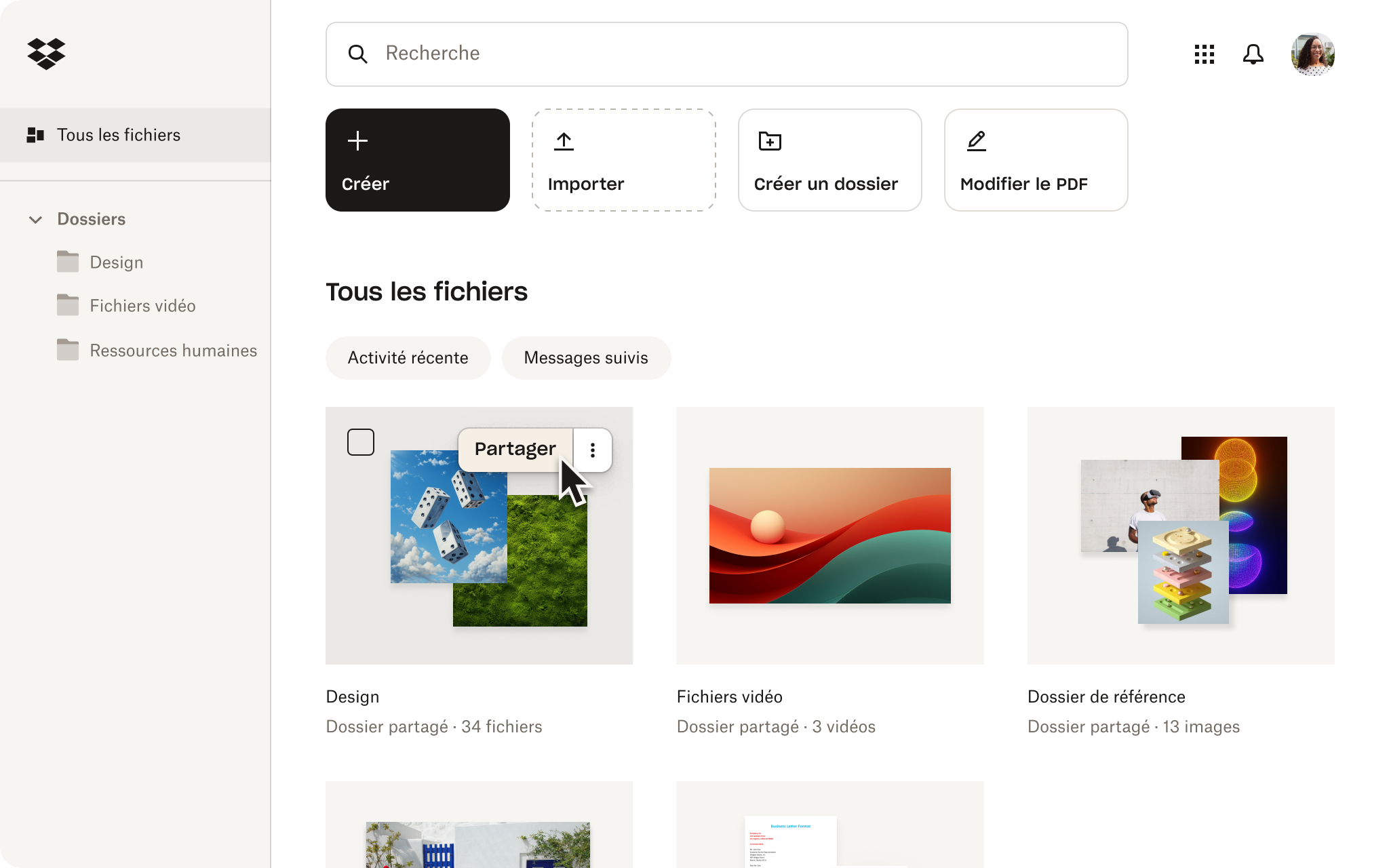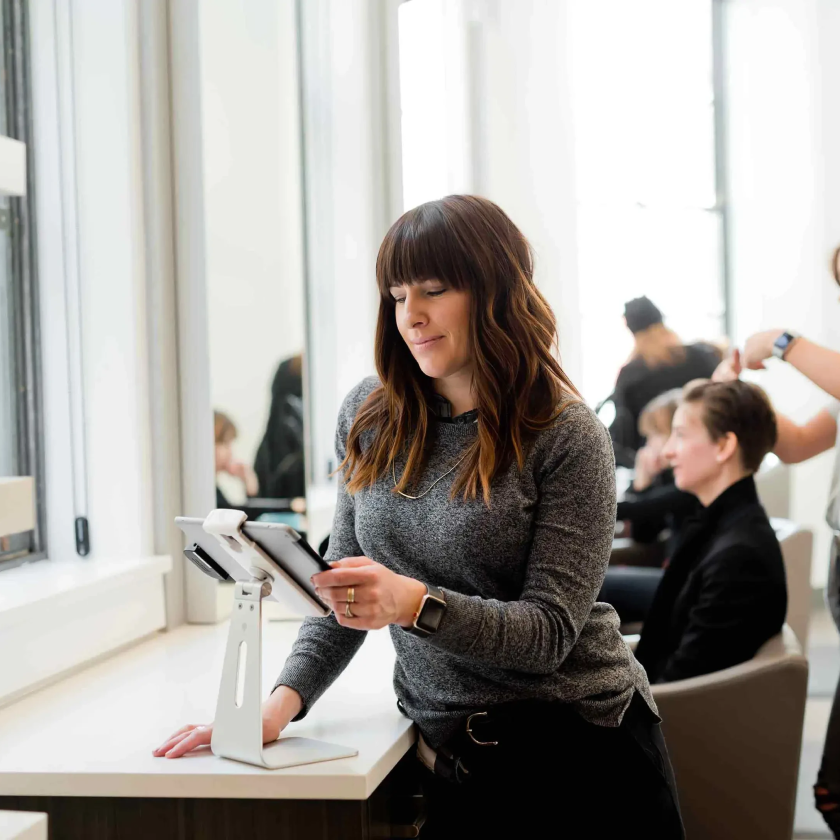Si vous gérez une équipe, vous savez à quel point il a été difficile de suivre les évolutions du monde du travail.
Maintenant que le télétravail et le travail hybride se sont imposés comme la norme, les chefs d’entreprise disposent d’une marge d’erreur bien plus réduite, surtout quand il s’agit de définir la bonne configuration de travail pour leurs employés.
Le travail flexible : l’arme secrète des petites entreprises ?
Comment les petites entreprises ont-elles transformé le travail à distance en avantage concurrentiel durable ? Dropbox a décidé de répondre à cette question dans notre rapport Choice Economy, une enquête menée auprès de plus de 2 000 dirigeants et employés de petites entreprises dans huit pays.
L’objectif était d’étudier les conséquences tangibles de la flexibilité au travail sur les nouvelles aspirations des employés en matière d’horaires et d’organisation. Près de deux tiers des entreprises ont modifié de façon notable leur structure, leurs outils et leurs pratiques pour encourager la collaboration pendant la pandémie. C’était essentiel lorsque tout le monde était confiné à la maison durant ces années. Mais ce n’était que le début.
Nous savons que la nouvelle technologie permet aux équipes de travailler à distance, mais que pouvons-nous faire pour garantir le même niveau de flexibilité à l’heure où certains membres de l’équipe retrouvent le chemin du bureau tandis que d’autres restent en télétravail ?
Dans toute entreprise qui souhaite survivre aux prochaines années, la priorité absolue est de mettre en place des équipes ultra-performantes, où qu’elles se trouvent. Nos recherches nous ayant amenés à échanger avec les plus grands experts en télétravail, nous vous expliquons aujourd’hui comment développer un environnement de travail flexible.
Que signifie « travail flexible » ?
Le travail flexible offre une alternative au modèle traditionnel du bureau de 9 h à 17 h. Les employés ont un meilleur contrôle sur le moment, le lieu et la manière dont ils travaillent. Il peut s’agir de travail à temps partiel, à distance ou hybride, d’horaires comprimés, de partage de poste, ou encore d’une autre forme entièrement différente.
Par exemple, un horaire flexible peut permettre à un de vos employés de commencer et de finir sa journée à des heures flexibles , afin de mieux s’adapter à ses besoins en matière de garde d’enfants.
Le changement fondamental apporté par le travail flexible est qu’il donne aux employés la possibilité d’adapter leurs horaires et leur environnement de travail à leurs besoins. Et cela peut offrir des avantages considérables pour les employeurs et les employés, notamment en termes de satisfaction au travail, d’engagement, de motivation et d’équilibre entre vie professionnelle et vie privée.
Comment instaurer la flexibilité au travail au sein de votre équipe
1. Demandez aux employés ce qu’ils veulent
Si vous souhaitez offrir de la flexibilité sur le long terme, il est essentiel de comprendre ce que vos équipes recherchent réellement.Autrement dit, vous devez leur laisser le choix, et non leur imposer des solutions ou des méthodes de travail figées.
Les employés savent aujourd’hui quel environnement de travail leur convient le mieux selon les circonstances.
« Ils préfèrent parfois rester chez eux pour mieux se concentrer, ou se rendre au bureau pour le travail d’équipe et le brainstorming, et ils peuvent prendre cette décision seuls. Si vous les autorisez à le faire, vous verrez leur productivité monter en flèche », explique Kate Lister, présidente de Global Workplace Analytics.
Évitez donc de prendre à la hâte des décisions pour vos employés, et pensez à leur demander ce qu’ils veulent vraiment, même si leurs attentes peuvent vous surprendre.
« Dans le cadre d’une enquête récente, nous avons demandé aux employés si, au moment de retourner au bureau, ils préféreraient avoir des réunions physiques ou virtuelles avec leurs collègues se trouvant dans les mêmes locaux. 70 % d’entre eux ont répondu qu’ils opteraient pour des réunions virtuelles, même si les participants travaillaient au même endroit. »
Kate ListerPrésidente de Global Workplace Analytics
2. Continuez à développer votre culture d’entreprise, même à distance
Maintenant que la pandémie est derrière nous, les entreprises peuvent à nouveau offrir à leurs employés cette culture du travail qu’ils appréciaient tant. Mais comme nous sommes encore nombreux à travailler régulièrement depuis chez nous, il est important de veiller à ce que cette culture prenne en compte cet environnement de travail mixte. La tâche n’a rien de difficile, mais requiert tout de même un peu de travail en amont. Et rappelons-nous que les afterworks n’ont jamais été particulièrement inclusifs non plus, dans le sens où ils ne réunissaient jamais l’équipe complète.
Alors, quelle alternative choisir ?
Il n’y a pas besoin d’investir beaucoup d’argent dans les derniers outils à la mode pour développer une culture de qualité. Les appels vidéo se sont démocratisés, et nous aurions tort de les utiliser dans le seul cadre du travail. Les réunions hybrides permettent aux employés travaillant au bureau et à distance de collaborer par le biais de conférences téléphoniques. Les entreprises peuvent ainsi maintenir la traditionnelle pause-café en encourageant les employés en télétravail à programmer des appels avec leurs collègues restés sur site pendant les heures de bureau, juste pour bavarder.
Cela dit, la culture va au-delà des cafés partagés entre collègues. Il faut associer ce côté récréatif à certains aspects plus personnels de la culture. Et cela commence en haut de l’organigramme, comme le souligne le Dr Andreatta : « Pour 90 % des employés, ce sont les managers qui imprègnent la culture d’entreprise. Et pourtant, trop peu d’entreprises investissent dans la formation de ces supérieurs hiérarchiques. »
Ces formations en management sont extrêmement importantes, car la culture d’une entreprise repose avant tout sur des éléments concrets, comme le fait de pouvoir facilement ou non demander de l’aide, obtenir des congés, discuter des problèmes que vous rencontrez, etc. Les entreprises qui souhaitent prospérer dans le monde du travail flexible devront soigner tous les aspects de cette culture interne.
3. Adoptez les bons outils collaboratifs

La communication et la collaboration sont indispensables à la réussite de tout projet, workflow ou entreprise. Si vous essayez d’obtenir l’une sans l’autre, vous finirez avec aucune des deux.
Notre enquête le confirme :
- Plus d’un tiers des entreprises (36 %) considèrent le manque d’outils collaboratifs appropriés comme un obstacle important au travail à distance.
- 48 % affirment que l’absence de collaboration a un impact négatif sur la productivité des employés.
- 87 % des entreprises estiment également qu’une meilleure collaboration entre les équipes sera essentielle pour assurer la pérennité de leur activité.
Les entreprises doivent à tout prix trouver une plateforme qui rassemble les équipes en toute simplicité, leur permette d’intégrer leurs outils actuels et simplifie réellement la gestion de projet.
Elles ne doivent pas se contenter de changements en surface. Au contraire, elles doivent se servir de la technologie pour modifier en profondeur et à long terme les processus internes afin d’en tirer le maximum d’avantages.
« Un grand nombre d’interactions qui ont lieu au cours de réunions pourraient se faire grâce à des outils asynchrones. Nous devons vraiment changer la façon dont nous définissons, évaluons et réalisons le travail, et où nous le faisons. »
Britt AndreattaDocteur et directeur général chez 7th Mind Inc.Dropbox en est un exemple. Nous proposons une gamme complète d’outils qui permettent une collaboration transparente, une gestion de projet facile, un partage sans compromis et une synchronisation efficace des informations, et bien plus encore.
4. Ne cessez jamais d’innover
Il est important de ne pas considérer l’innovation comme une activité ponctuelle. Quoi que vous fassiez pour créer un environnement de travail flexible, cherchez constamment à l’améliorer.
Ce que cela signifie est simple. En plus des retours de vos collaborateurs, vérifiez régulièrement vos processus internes et, en cas de doute, faites appel à un prestataire spécialisé. Si vous optez pour une nouvelle technologie, travaillez aux côtés des fournisseurs que vous avez sélectionnés pour tirer le meilleur parti de votre investissement, et mettez en place une équipe transverse pour superviser son déploiement et son utilisation à plus grande échelle dans l’entreprise.
Enfin, assurez-vous que toutes les parties prenantes sont impliquées à chaque étape du processus. L’équipe dirigeante joue un rôle essentiel dans la conduite du changement, mais l’adoption par l’ensemble des employés est tout aussi importante. Si vos collaborateurs ne voient pas la valeur des outils et des processus que vous mettez en place, ou que vous ne les avez pas consultés pour savoir si et comment ils les utiliseront, ils risquent fort de ne pas s’en servir, et votre stratégie de travail flexible sera probablement vouée à l’échec.
Adopter un mode de travail flexible avec Dropbox
Que vous travailliez à temps partiel ou à temps plein, que vous soyez au bureau ou à distance, Dropbox dispose des outils pour vous aider à gérer votre emploi du temps flexible.
De la technologie de synchronisation cloud vous permettant de travailler de n’importe où, aux fonctionnalités de partage de fichiers facilitant la collaboration avec vos collègues, Dropbox vous permet, à vous et à votre équipe, de réussir.


